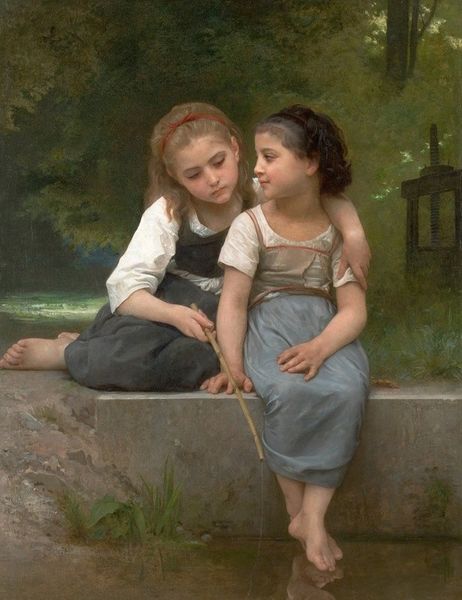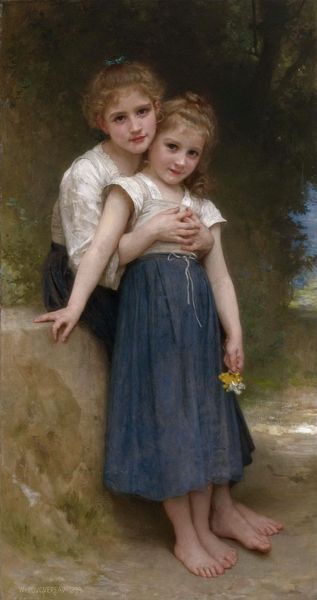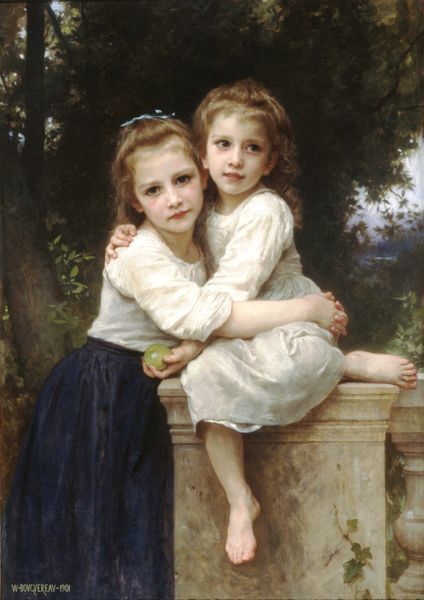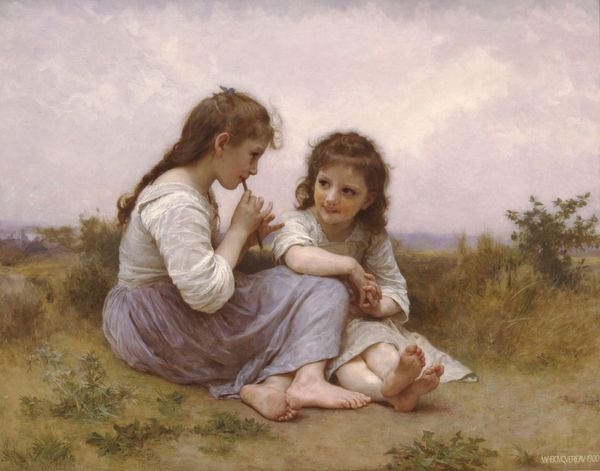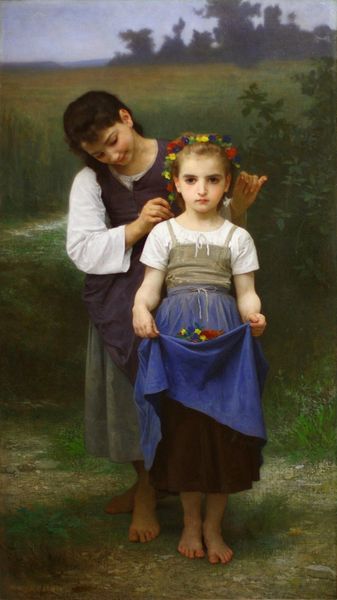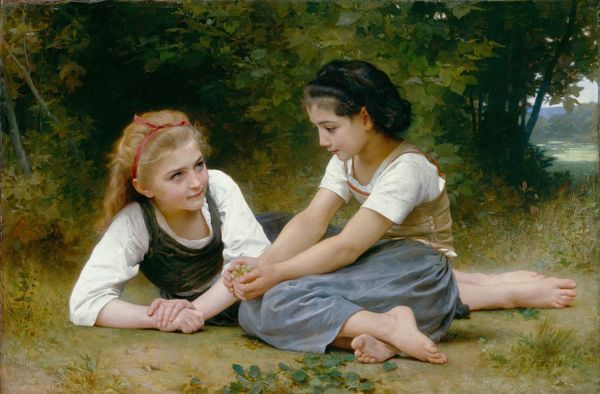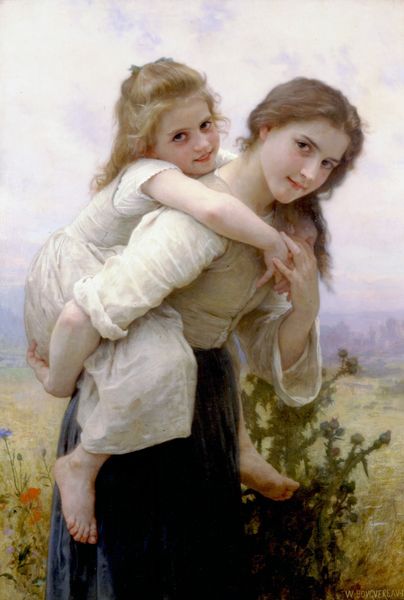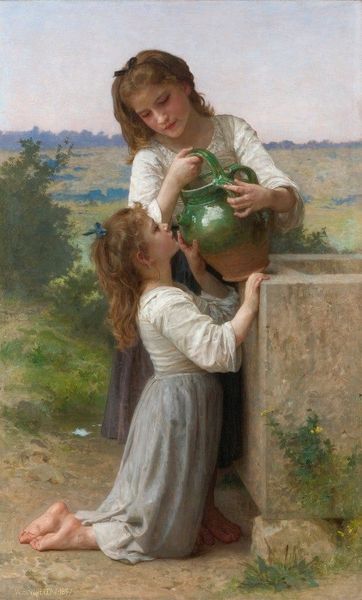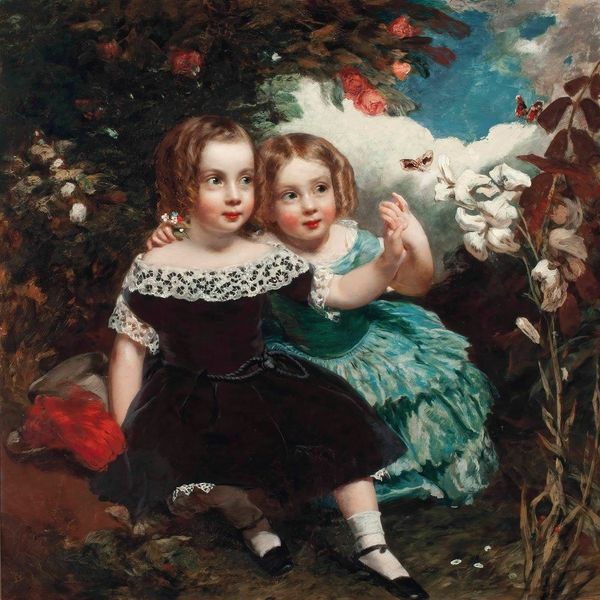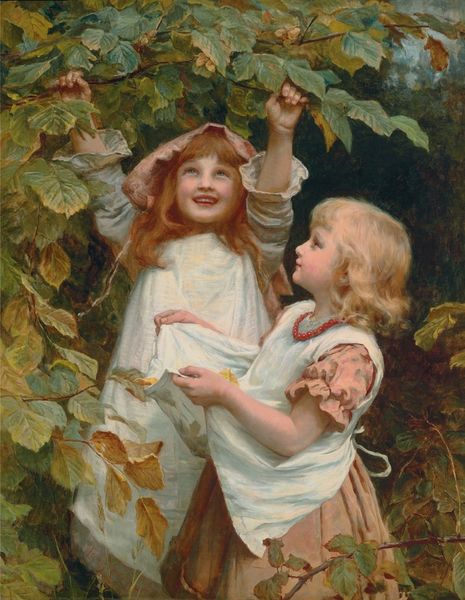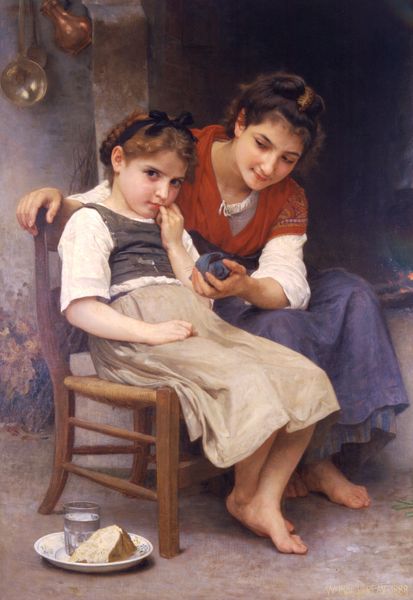
Copyright: Public Domain: Artvee
Editor: Here we have "The Cherry Branch," an 1881 oil painting by William Bouguereau. It’s charming, isn’t it? The figures feel very posed. How do you interpret this work in light of its time? Curator: It's crucial to consider this painting within the social fabric of late 19th-century France. Bouguereau often idealized peasant life. But what does it mean to aestheticize poverty, particularly in a time of immense social upheaval? These aren't simply children; they represent a specific class, carefully constructed for a bourgeois audience. Editor: I hadn't thought of it that way. It feels like such a gentle, simple image. Curator: Exactly! The "simplicity" is a constructed narrative. Bouguereau's style, rooted in academic realism, served to reinforce existing power structures. He presented a sanitized version of rural life, obscuring the harsh realities of poverty and labor. Look at the bare feet – what does that signify? Is it an innocent detail, or a subtle marker of their social standing? Editor: So you're saying it's not just a portrait of two cute girls? Curator: Precisely. Art doesn’t exist in a vacuum. We must ask: Whose gaze are these children presented for? What stories are being told, and more importantly, what stories are being suppressed? What is the role of academic art in shaping perceptions of class and gender during this period? Editor: That gives me a lot to think about. I always saw beauty, but now I understand there's a complex story being told here too. Curator: Exactly! Seeing beauty *and* interrogating its origins. That's where the real understanding lies.
Comments
No comments
Be the first to comment and join the conversation on the ultimate creative platform.
